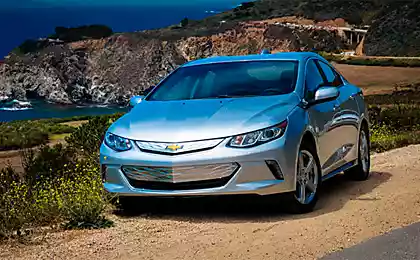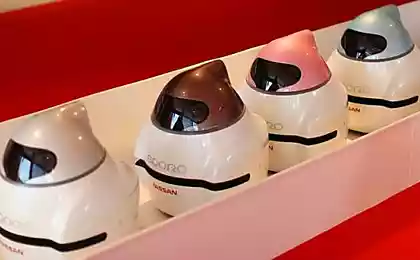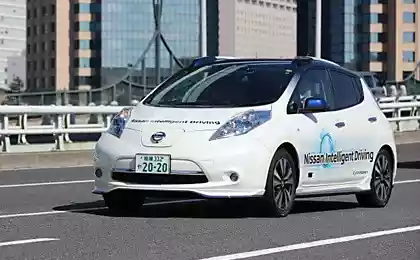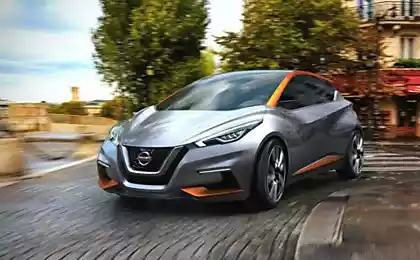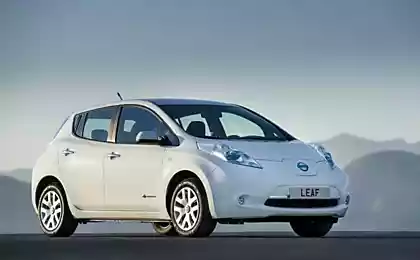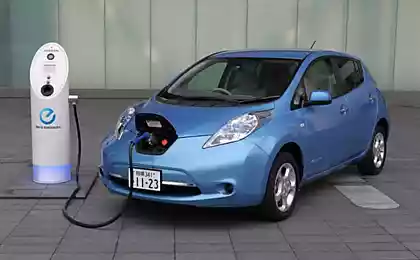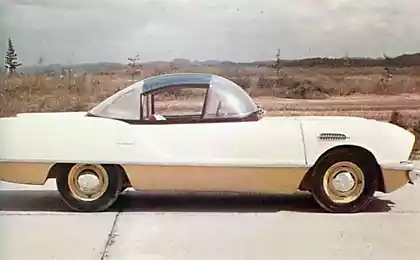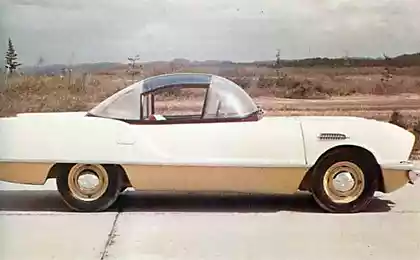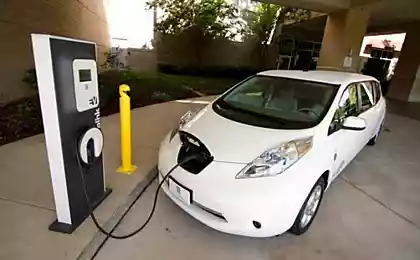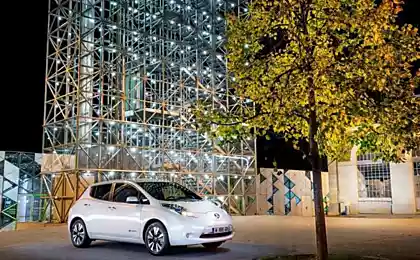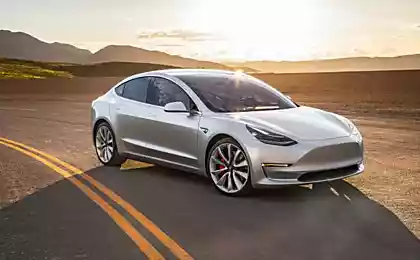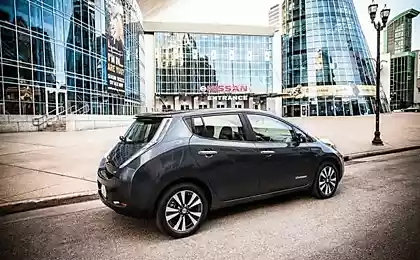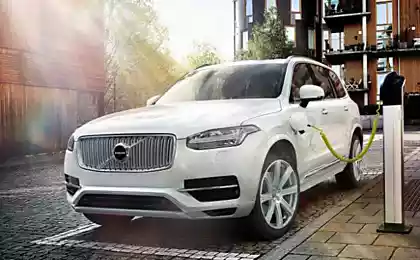732
A new generation Nissan LEAF with an unmanned system ProPILOT
President and chief Executive officer of Nissan, Carlos Ghosn announced at CES, the imminent emergence of a new Nissan LEAF. The next generation of electric vehicles will be equipped with the ProPILOT system created for the movement in its lane on the highway.
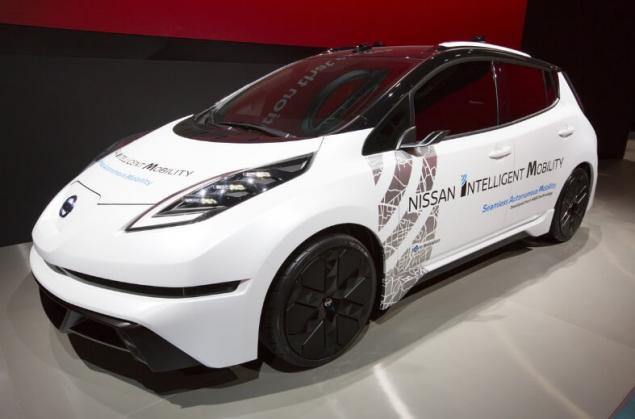
New Nissan LEAF will consolidate the leading position of Nissan in the segment of electric vehicles. In 2010 the company became the first automaker offered the market an electric car for the mass market. Today the Nissan LEAF is the world's top selling electric car, sales of which exceed 250,000 vehicles and the total mileage of all released LEAF has reached 3 billion kilometers. This distance is longer than the path from Earth to Saturn and back.
As the company said, during this time, the LEAF prevented the emission into the atmosphere 497 227 tonnes of carbon dioxide equivalent greenhouse gas emissions annually produced by the light 52 000 houses. Nissan LEAF also won three titles in the series "Car of the Year" ("car of the year") in Japan, Europe and the world competition. In 2013, Nissan was again the first on the market, this time in the segment of light commercial electric vehicles, presenting their model of the e-NV200.
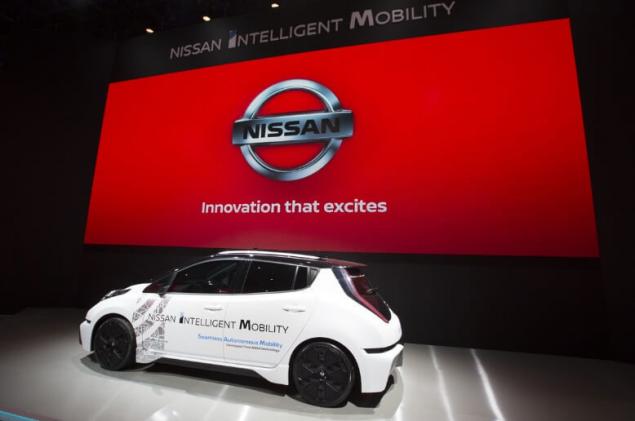
In order to achieve zero emissions of harmful substances, Nissan is now focusing on electrification of vehicles, together with the diversification of electric propulsion systems and fuel systems to adapt their cars to different energy sources and consumer demands inherent in a particular market.
To existing key technologies the company has added a new development, also based on electric vehicles, among which are the serial hybrid power plant e-Power and fuel cells. New Nissan Note e-POWER, sales of which began in Japan in the end of 2016, became a bestseller on the market by the end of November. The company has major manufacturing facilities in five countries, and the Nissan electric vehicles presented at the 48 markets around the world.
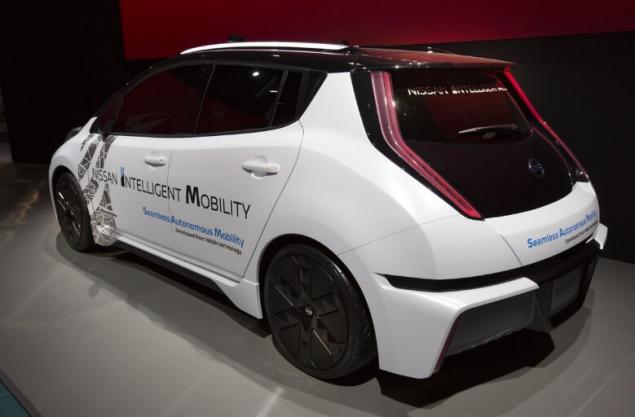
The company's commitment to its goal to achieve zero emissions of harmful substances goes beyond the simple production of great cars. Nissan helps create an ecosystem with a global approach, starting with building infrastructure for charging electric cars, recycling batteries through the presentation of the concept of Vehicle to Grid (V2G).
Nissan is working with government representatives, corporations and other stakeholders on the expansion of the charging infrastructure and accelerate the adaptation of electric vehicles. Today around the world have already installed more than 13 thousand charging stations of CHAdeMO standard. In California the Nissan involved in the project "DRIVETHEARC" created by the Japanese organization of New Energy and Industrial Technology Development Organization (NEDO), in which a network of charging stations will stretch from Monterey to lake Tahoe. The project "DRIVETHEARC" aims to simplify long-distance travelling with electric cars, studying models of driving and the use of electric vehicles.
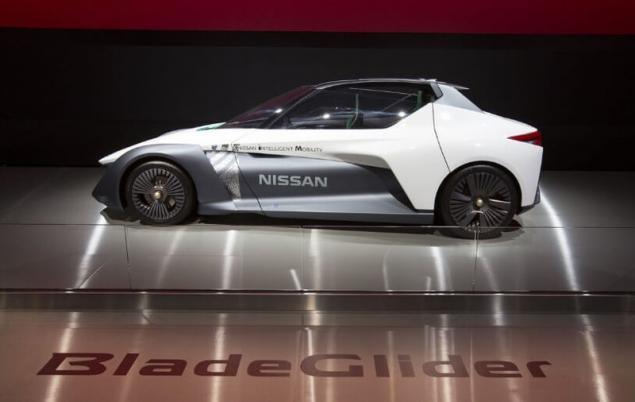
Battery electric vehicles can do much more than just nourish the vehicle. They can also be used as storage of electricity. Therefore, Nissan is promoting electric vehicles as a mobile source of clean energy. Integration of electric vehicles into society will help to improve the distribution of energy in electricity. Solutions such as "Vehicle to Home" (V2H), "Vehicle to Building" (V2B) and Vehicle to Grid (V2G) has already been adapted for different markets, including European, American and Japanese.
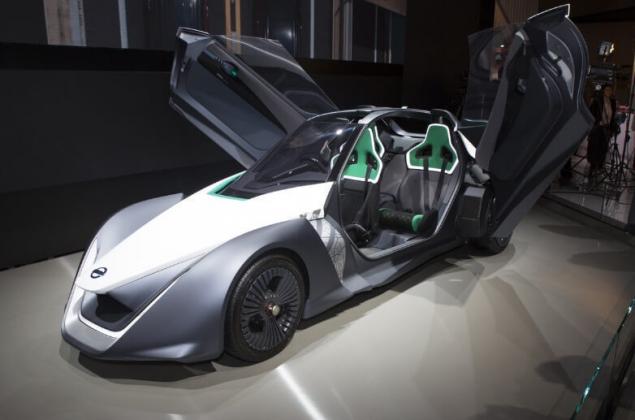
In 2012, Nissan has introduced in Japan the system "LEAF to Home" that allows drivers to feed your house with electricity from the battery of your Nissan LEAF. The driver can charge your Nissan LEAF at night when electricity is cheaper and use the stored energy to power the house. Thus, this system helps to reduce power consumption of the network during peak periods when the demand for electricity and therefore its price the highest. The system can also be used as a backup source of power when disconnected from the mains and in emergency situations.
In 2013, Nissan is also testing its system "Vehicle to Building" in Japanese at Nissan Advanced Technology Center. In this project, six LEAF electric vehicles contribute to reducing costs the center for energy. The new European headquarters of Nissan, which opened in Paris in the spring of 2017 also will be partially supported by the V2G and V2B systems.

On the Hawaiian island of Maui, the owners of Nissan LEAF can take part in a unique project, exploring the possibility of combining smart grids, renewable energy sources and electric vehicles into a single solution for managing energy consumption. Residents use electricity from renewable sources (wind and solar) to charge the batteries of their electric vehicles, then use their stored battery energy to power their homes or shared the power grid of the island. The Nissan is already attended by about 600 owners of LEAF. In cooperation with its partners the company uses the media for alerts on developments and recommendations for terms of use.
Today in Japan about 4,000 owners of the residential buildings use electric vehicles to optimize their own energy consumption. In addition, in Japan and Europe, hundreds of electric cars used to power a variety of buildings.
Also, Nissan is helping to extend the lifecycle of lithium-ion batteries of electric vehicles. In Europe, Nissan, in conjunction with the Eaton company, offers consumers the opportunity to save money, accumulating energy (solar or from the grid) in electric batteries, which has already worked put a resource by selling it to energy companies. Designed for business system xStorage allows organizations to manage energy consumption and to feed their plants more advanced and eco-friendly way. published
Source: ecotechnica.com.ua/transport/1912-novyj-nissan-leaf-s-bespilotnoj-sistemoj-propilot-anonsirovan-na-ces-2017.html

New Nissan LEAF will consolidate the leading position of Nissan in the segment of electric vehicles. In 2010 the company became the first automaker offered the market an electric car for the mass market. Today the Nissan LEAF is the world's top selling electric car, sales of which exceed 250,000 vehicles and the total mileage of all released LEAF has reached 3 billion kilometers. This distance is longer than the path from Earth to Saturn and back.
As the company said, during this time, the LEAF prevented the emission into the atmosphere 497 227 tonnes of carbon dioxide equivalent greenhouse gas emissions annually produced by the light 52 000 houses. Nissan LEAF also won three titles in the series "Car of the Year" ("car of the year") in Japan, Europe and the world competition. In 2013, Nissan was again the first on the market, this time in the segment of light commercial electric vehicles, presenting their model of the e-NV200.

In order to achieve zero emissions of harmful substances, Nissan is now focusing on electrification of vehicles, together with the diversification of electric propulsion systems and fuel systems to adapt their cars to different energy sources and consumer demands inherent in a particular market.
To existing key technologies the company has added a new development, also based on electric vehicles, among which are the serial hybrid power plant e-Power and fuel cells. New Nissan Note e-POWER, sales of which began in Japan in the end of 2016, became a bestseller on the market by the end of November. The company has major manufacturing facilities in five countries, and the Nissan electric vehicles presented at the 48 markets around the world.

The company's commitment to its goal to achieve zero emissions of harmful substances goes beyond the simple production of great cars. Nissan helps create an ecosystem with a global approach, starting with building infrastructure for charging electric cars, recycling batteries through the presentation of the concept of Vehicle to Grid (V2G).
Nissan is working with government representatives, corporations and other stakeholders on the expansion of the charging infrastructure and accelerate the adaptation of electric vehicles. Today around the world have already installed more than 13 thousand charging stations of CHAdeMO standard. In California the Nissan involved in the project "DRIVETHEARC" created by the Japanese organization of New Energy and Industrial Technology Development Organization (NEDO), in which a network of charging stations will stretch from Monterey to lake Tahoe. The project "DRIVETHEARC" aims to simplify long-distance travelling with electric cars, studying models of driving and the use of electric vehicles.

Battery electric vehicles can do much more than just nourish the vehicle. They can also be used as storage of electricity. Therefore, Nissan is promoting electric vehicles as a mobile source of clean energy. Integration of electric vehicles into society will help to improve the distribution of energy in electricity. Solutions such as "Vehicle to Home" (V2H), "Vehicle to Building" (V2B) and Vehicle to Grid (V2G) has already been adapted for different markets, including European, American and Japanese.

In 2012, Nissan has introduced in Japan the system "LEAF to Home" that allows drivers to feed your house with electricity from the battery of your Nissan LEAF. The driver can charge your Nissan LEAF at night when electricity is cheaper and use the stored energy to power the house. Thus, this system helps to reduce power consumption of the network during peak periods when the demand for electricity and therefore its price the highest. The system can also be used as a backup source of power when disconnected from the mains and in emergency situations.
In 2013, Nissan is also testing its system "Vehicle to Building" in Japanese at Nissan Advanced Technology Center. In this project, six LEAF electric vehicles contribute to reducing costs the center for energy. The new European headquarters of Nissan, which opened in Paris in the spring of 2017 also will be partially supported by the V2G and V2B systems.

On the Hawaiian island of Maui, the owners of Nissan LEAF can take part in a unique project, exploring the possibility of combining smart grids, renewable energy sources and electric vehicles into a single solution for managing energy consumption. Residents use electricity from renewable sources (wind and solar) to charge the batteries of their electric vehicles, then use their stored battery energy to power their homes or shared the power grid of the island. The Nissan is already attended by about 600 owners of LEAF. In cooperation with its partners the company uses the media for alerts on developments and recommendations for terms of use.
Today in Japan about 4,000 owners of the residential buildings use electric vehicles to optimize their own energy consumption. In addition, in Japan and Europe, hundreds of electric cars used to power a variety of buildings.
Also, Nissan is helping to extend the lifecycle of lithium-ion batteries of electric vehicles. In Europe, Nissan, in conjunction with the Eaton company, offers consumers the opportunity to save money, accumulating energy (solar or from the grid) in electric batteries, which has already worked put a resource by selling it to energy companies. Designed for business system xStorage allows organizations to manage energy consumption and to feed their plants more advanced and eco-friendly way. published
Source: ecotechnica.com.ua/transport/1912-novyj-nissan-leaf-s-bespilotnoj-sistemoj-propilot-anonsirovan-na-ces-2017.html
This simple procedure stimulates hair growth and healthier scalp
Company Panasonic introduced the concept of the Autonomous car
